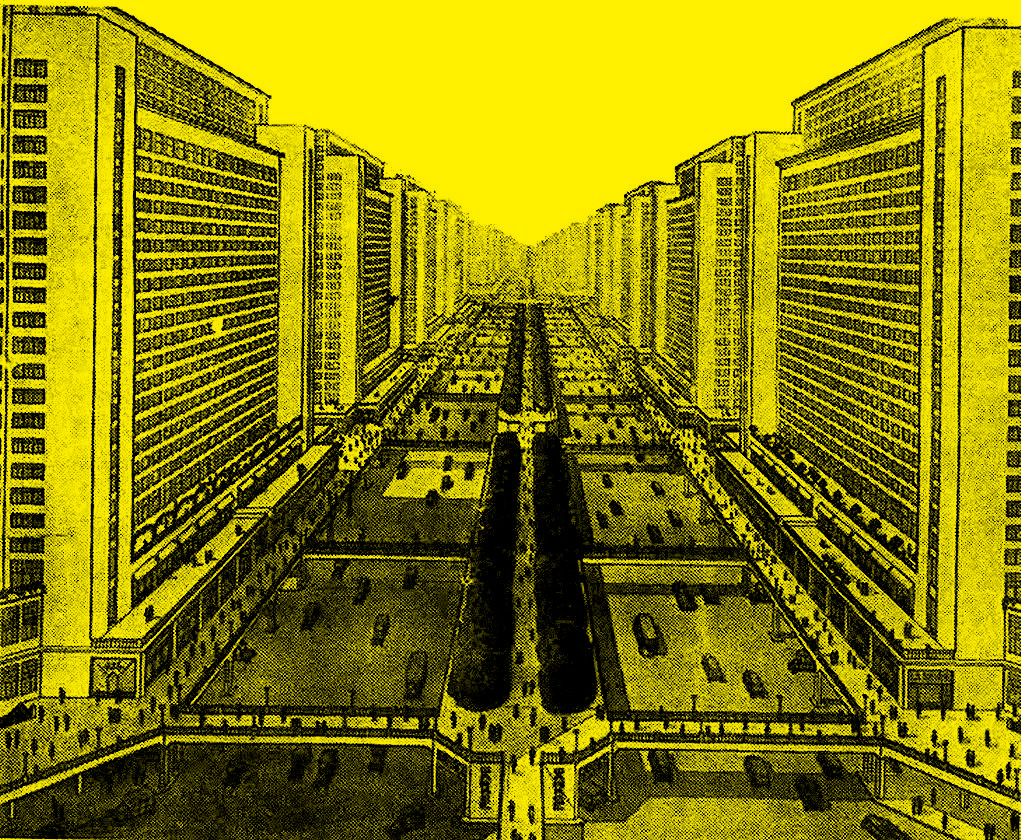Finalists
We received more than 250 submissions from over 40 countries. The jury has selected the 10 best ideas, which were featured in the Post-Fossil City Exhibition.
Imagine a city that is not addicted to fossil fuels. How would that change the way we live, work, and move around the city?
The Urban Futures Studio proudly presents the Post-Fossil City Contest, calling on artists, designers, architects, urbanists, authors, photographers, filmmakers and all-around creative thinkers to imagine a city that is no longer reliant on fossil fuels. We received 250 submissions from people in over 40 countries, ranging from architects to physical scientists, from designers to musicians. The 10 most innovative, inspiring, and imaginative ideas were featured in exhibitions in Utrecht, the Hague and Ghent.
The project The Ark of the Newest Covenant: Ten Sustainable Commandments, created by BreukersGodrie, has been chosen as the winner of the Post-Fossil City Contest! Click here for the jury report.
We received more than 250 submissions from over 40 countries. The jury has selected the 10 best ideas, which were featured in the Post-Fossil City Exhibition.
In order to make the future, we first have to imagine it.
Fossil fuels have shaped the world as we know it. They have defined how we move around in our cars, generate electricity, how we produce and consume food, run our economies, and design our cities. As we’re moving towards a post-fossil future, our addiction to coal, gas and oil will come to an end. This transition and new era will reshape cities and everyday life so radically that it’s hard to imagine what it will feel, taste, smell, and look like.

Innovation is the result of responding with ideas to problems. Both the automobile and bicycle were developed in response to dissatisfaction with transportation by horse, and as we know, these means of transportation continue to make an impact on our environment. Planners and architects like Cornelis van Eesteren, Robert Moses and Le Corbusier designed cities for car traffic — machines for living, focused entirely on efficiency. Today, their ideas are seen as failed utopias, that have nonetheless strongly influenced the urban landscape. Let us design — aspects of — a new, post-fossil city, adapted to this major challenge of our time? Do you think this city would be a utopia or a dystopia, and which problems might arise in the process of achieving this?
The Urban Futures Studio asks creative thinkers and makers to take the problems of our current cities as a starting point, in order to imagine the everyday texture of the post-fossil city. We would love to hear and see your ideas.
Click here to read our call for imaginaries.
Maarten Hajer is professor of Urban Futures at Utrecht University. He is former Director-General of the Netherlands Environmental Asssessment Agency, and lead curator of the IABR 2016.
Architect Winy Maas is one of the founders of MVRDV. Maas lectures and teaches extensively around the world, and is a professor at TU Delft.
Jurgen Bey is co-founder of Studio Makkink & Bey. He is also Director of the Sandberg Institute in Amsterdam.
Anita van den Ende is Director Climate, Air and Noise, and Deputy Director General of the Environment and International Affairs at the Ministry of Infrastructure & Environment.
Lot van Hooijdonk is alderwoman for Mobility, Sustainability and the Environment for the City of Utrecht.
Willem Schinkel is Professor of Social Theory at Erasmus University Rotterdam and a member of the Young Academy of the Royal Netherlands Academy of Arts and Sciences (KNAW).
Missing your question? Please send us an email.
Of course. Please check out this article we've written, or read this interview with Maarten Hajer in NRC Handelsblad (sorry, Dutch only).
1 — What is the artistic quality of the proposal has an artistic quality? How unique is the proposal? And does it distinguish itself from already existing imaginaries of the post-fossil city?
2 — To which extent does the proposal take, as its starting point, a future with no dependency on fossil fuels?
3 — How integral is the proposal? Does it only take into account environmental aspects, or also social and economic aspects?
4 — To which extent does the proposal focus on the texture of everyday experience in the post-fossil city, such as changes in built environment, social structure, infrastructure and daily life? How tangible and detailed is the proposal?
5 — How scalable is the proposal? Can it be used as a tool in the transition towards a of post-fossil future?
The Urban Futures Studio is a newly formed cross-disciplinary institute led by Prof. Maarten Hajer. It aims to improve the interaction between academic insights and the challenges actors face in coping with the future, particularly at the urban level. The Urban Futures Studio is embedded within the Faculty of Geosciences and collaborates closely with the research groups within this faculty. It wants to take the lead in in the study and development of new practices that relate back to dealing with environmental, social, economic and political challenges within the urban field.
Please send an email to contact@postfossil.city.